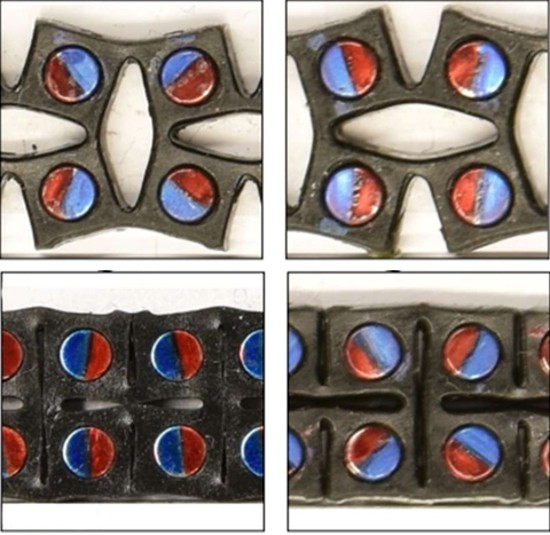Phase change refers to a shift in the way a material responds when subjected to external inputs. A good example is ice turning into water and then into steam. We witness this phase change as the seasons change here on Earth. What actually happens occurs when photons from the Sun convert to heat energy when passing through the atmosphere. That heat loosens the electromagnetic molecular bonds in the material. It takes less heat energy to make the first phase change, ice to water than it does to go to the next phase change, water to steam. It is this capacity of water to absorb considerable amounts of heat energy before phase change that makes it an ideal medium for cooling hot things. That’s why water is used in manufacturing processes and thermal electric powerplants.
Now consider what three researchers at the University of Massachusetts Amherst recently invented, a material with a consistency described by one of the Amherst team, Alfred Crosby, as equivalent to a “super rubber band.” Crosby is one of the authors of a paper that appeared on January 4, 2022, in the journal Proceedings of the National Academy of Sciences (PNAS). He along with his two colleagues are on the faculty of the Polymer Science and Engineering Department at the University. The paper’s lead author is Xudong Liang, also a professor at the Harbin Institute of Technology, in Shenzhen, China. The third member of the team is Honbo Fu.
The material they invented is described as being “elasto-magnetic.” It contains tiny embedded magnets and a rubber-like consistency. The material phase shift occurs when the polarity of the magnets is altered. This can happen with the application of external input which can be physical, electromagnetic, or heat.
In a University press release issued on February 2, 2022, Crosby is quoted stating, “To amplify energy release or absorption, you have to engineer a new structure at the molecular or even atomic level.” This is exactly what has been done. In addition, the researchers have made the material programmable.
What is the inspiration behind the invention? It comes from examining the properties of the jaws from Venus Flytraps and various animals that snap their jaws shut when triggered by subtle pressure changes. In the case of the plant when a fly lands on it. And in the case of some large ant species, when their jaws encounter a desired object or prey. States Liang, “By embedding tiny magnets into the elastic material, we can control the phase transitions…And because the phase shift is predictable and repeatable, we can engineer the metamaterial to do exactly what we want it to do: either absorbing…energy from a large impact or releasing great quantities of energy for explosive movement.”
What are the practical applications of this invention? Providing more capability to machines and products without needing a lot of additional energy input. For example, using the metamaterial in robots, or putting it into protective equipment to dissipate the energy from an impact. With the Super Bowl coming up next weekend, imagine football helmets made containing this metamaterial that could dampen the force caused by forceful tackles and helmet-to-helmet impacts leading to fewer concussions and head and neck injuries.
In the PNAS paper, the inventors describe in their conclusions the ultimate potential of the metamaterial stating that what they have developed provides “a platform for high-performance materials in energy storage and release, achieving programmable material properties.” Interested in seeing just how this material works in a demonstration? Watch this video. The dampening recoil reaction occurs in milliseconds.










[…] Read more […]